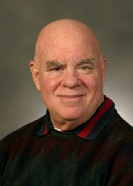Fundamentals of Forensic Science Chapter 23 Review Answers
Institutional Subscription
Gratuitous Global Shipping
No minimum social club
Description
Fundamentals of Forensic Scientific discipline, Second Edition, provides an introduction to the basic principles of forensic science. The book begins at a crime scene and ends in the courtroom. The book is divided into 6 parts. Role ane provides an overview of criminal justice and forensic science, roofing the basics of crime scene investigation and the nature of testify. Office ii discusses analytical tools, including microscopy, Raman spectroscopy, mass spectrometry, atomic spectroscopy, and separation methods. Parts 3 to v talk over the various types of forensic evidence collected, categorized past the types of science employed in their analysis: physical scientific discipline, chemical science, and biology. These include pathology; anthropology and odontology; entomology; serology and bloodstain design assay; Dna analysis; forensic hair examinations; forensic toxicology; fiber and paint analysis; friction ridge exam; and firearms and tool marks. Office 6 discusses the legal aspects of forensic science. The book is written for students with a background in basic science, and information technology is can be used in a i-semester or two-semester format.
Key Features
- Vivid, full-color illustrations that diagram key concepts and describe evidence encountered in the field
- Straightforward unit organization that includes key terms, numerous feature boxes emphasizing Internet resources, historical events in forensic scientific discipline, practical issues in laboratory analysis, and topics for further reading
- Effective pedagogy, including finish-of-chapter questions, paired with a clear writing style makes this an invaluable resource for professors and students of forensic scientific discipline
Readership
Students in forensic science, professionals in the various forensic disciplines - fire, chemistry, crime scene, trace evidence, police enforcement personnel, lawyers and defense attorneys.
Table of Contents
-
ForewordAcknowledgments
Preface to the Second Edition
Preface to the Commencement Edition
I. Criminal Justice and Forensic Scientific discipline
1. Introduction
ii. Crime Scene Investigation
3. The Nature of Evidence
II. Belittling Tools
4. Microscopy
v. Lite and Affair
6. Separation Methods
III. Biological Sciences
7. Pathology
8. Anthropology and Odontology
9. Entomology
ten. Serology and Bloodstain Design Analysis
11. DNA Analysis
12. Forensic Hair Examinations
Four. Chemical Sciences
xiii. Illicit Drugs
14. Forensic Toxicology
15. Fabric Fibers
16. Paint Analysis
17. Soil and Drinking glass
eighteen. Fires and Explosions
V. Physical Sciences
19. Friction Ridge Exam
twenty. Questioned Documents
21. Firearms and Tool Marks
22. Impression Show
VI. Law and Forensic Science
23. Legal Aspects of Forensic Scientific discipline
Glossary
Index
Product details
- No. of pages: 680
- Linguistic communication: English language
- Copyright: © Academic Press 2010
- Published: November 30, 2009
- Imprint: Academic Press
- eBook ISBN: 9780080961651
Almost the Authors
Max Houck
Dr. Max Thousand. Houck is an internationally-recognized forensic expert with inquiry interests in forensic science, education, and the forensic enterprise and its industries. He has worked in all aspects of forensic science, including at the FBI Laboratory. Dr. Houck has published widely in books and peer-reviewed journals. His anthropology and trace evidence casework includes the Branch Davidian Investigation, the September 11 attacks on the Pentagon, the D.B. Cooper example, the U.s. Embassy bombings in Africa, and the West Memphis Three case, among hundreds of others. He served for half dozen years equally the Chair of the Forensic Science Educational Program Accreditation Commission (FEPAC). Dr. Houck is a Fellow of the Regal Social club of Chemical science and a founding Co-Editor of the periodical Forensic Scientific discipline Policy and Direction.
Affiliations and Expertise
Vice President, Forensic and Intelligence Services, LLC
Jay Siegel

Jay Siegel, PhD is retired Director of the Forensic and Investigative Sciences Program and Chair of the Department of Chemistry and Chemical Biology at Indiana Academy Purdue University Indianapolis. He was Director of the Forensic Scientific discipline Plan at Michigan State University for 25 years from 1980-2004 until his retirement every bit Professor Emeritus. Dr. Siegel is a Distinguished Member of the American Academy of Forensic Sciences and was named as Distinguished Alumni Scholar by his alma mater, George Washington University in 2011. He is co-editor of Forensic Science Policy and Management: An International Journal. He was a member of the National Academy of Sciences Forensic Scientific discipline Committee from 2006-09.
Affiliations and Expertise
Director, Forensic and Investigative Sciences Programme, Indiana University - Purdue University, Indianapolis, IN, The states
Ratings and Reviews
Write a review
There are currently no reviews for "Fundamentals of Forensic Scientific discipline"
Source: https://www.elsevier.com/books/fundamentals-of-forensic-science/houck/978-0-12-374989-5
0 Response to "Fundamentals of Forensic Science Chapter 23 Review Answers"
Post a Comment